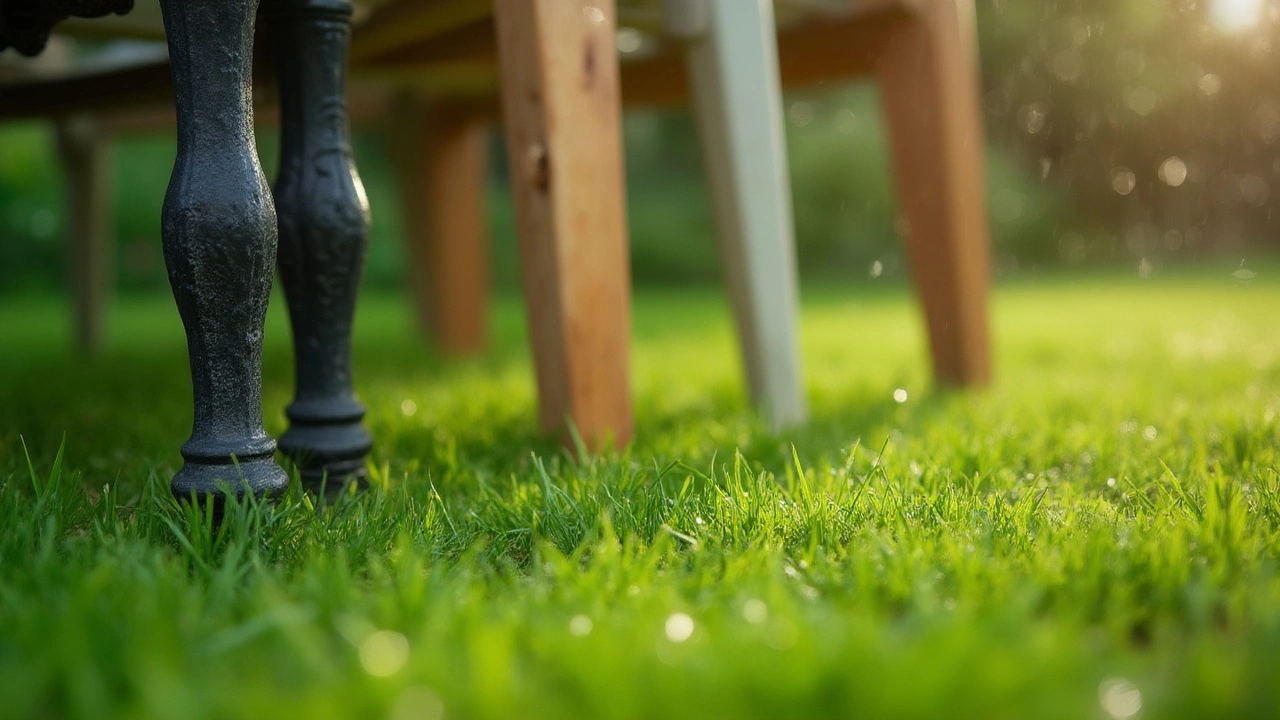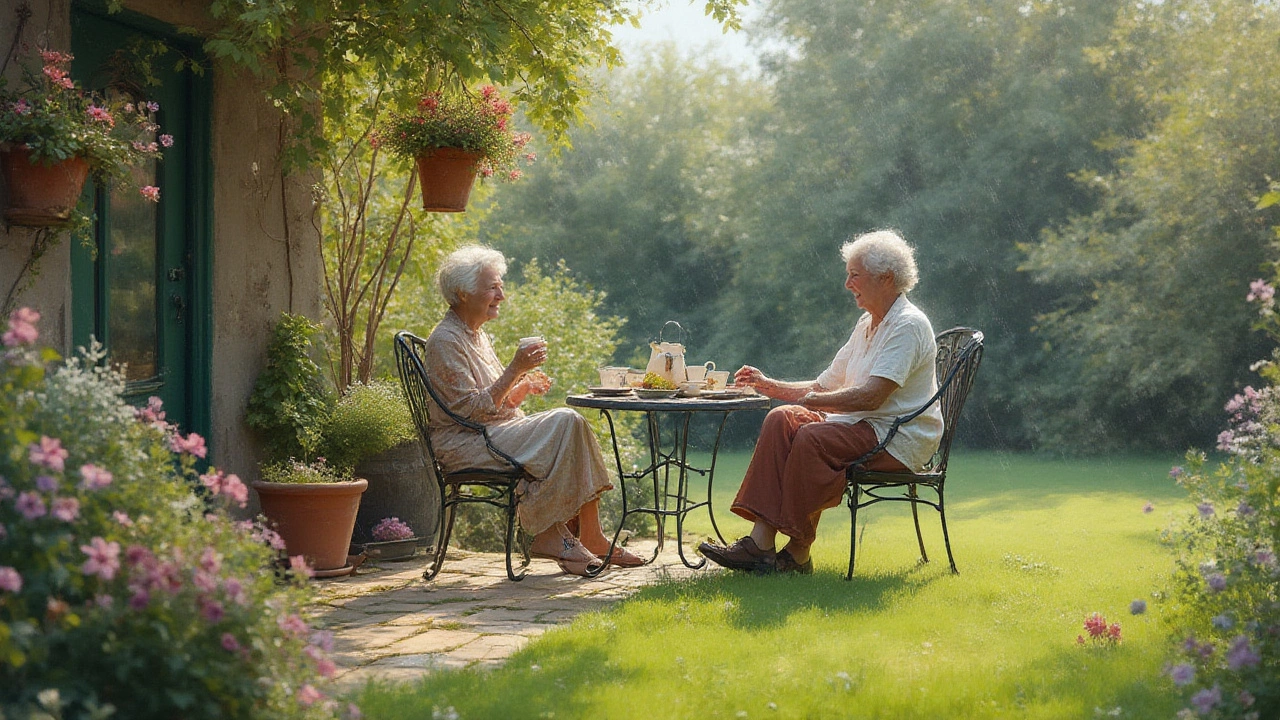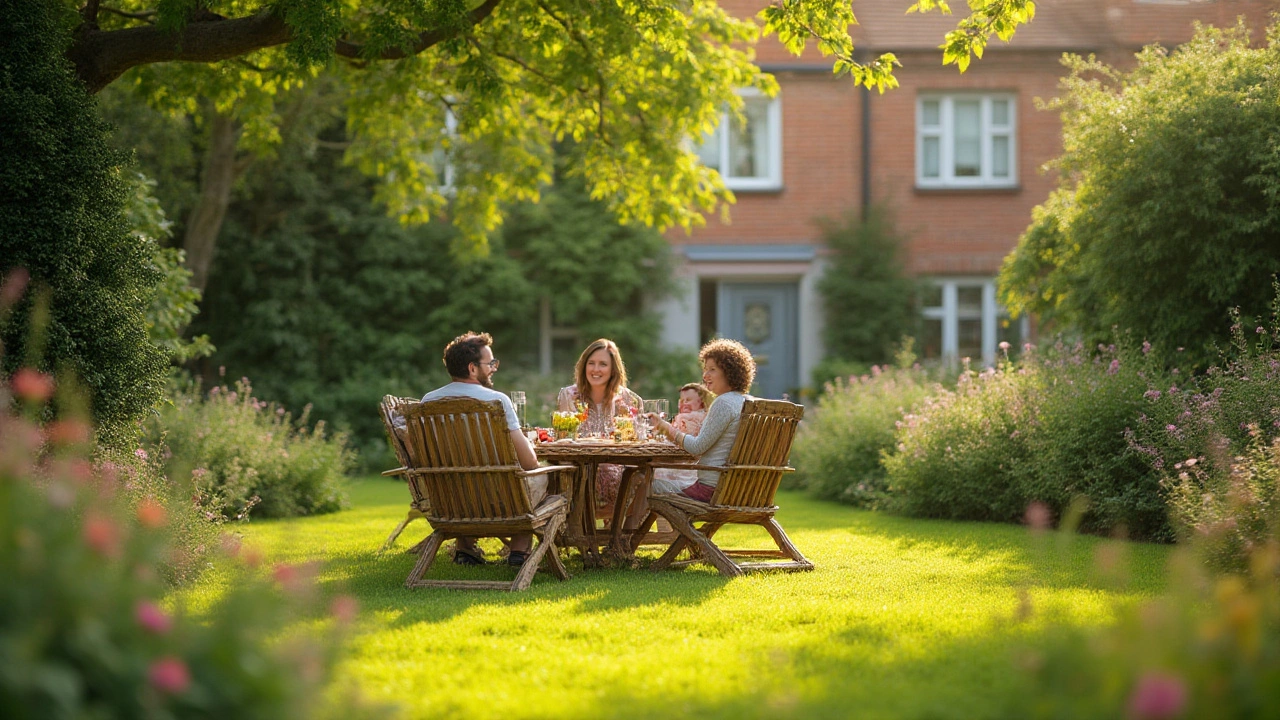Picture this: a sunny afternoon, cold drink in hand, and your favorite garden chair popped right onto the grass. Sounds cozy, right? But before you set up camp, you might wonder if your garden furniture and the lush green grass really mix well over time. It’s not just about whether you can do it—it’s about what actually happens when you do. Get ready for a reality check as we pull back the curtains on this common outdoor setup.
What Happens When You Place Garden Furniture on Grass?
Putting your garden furniture on the lawn seems like the simplest, most natural idea. It feels almost nostalgic—think picnic tables at a summer barbecue or lawn chairs during a backyard concert. But here’s where things get practical: grass and furniture aren’t always the best buddies. If you plop metal chairs or even wooden benches onto the grass, the furniture legs start sinking into soft soil after a while, especially if it's just rained or you've watered the garden recently. Wooden furniture on damp grass is like bread in a humid bag: at first everything’s fine, but give it a few days and things can get mushy, literally. Moisture from the ground creeps up, and before you know it, wood starts rotting or warping. Metal feet can rust up just as quickly—aluminum handles the elements okay, but steel legs will show orange stains after just a couple of weeks if the weather stays wet.
If you’ve ever moved your chair after it’s been sitting on the lawn, you’ve probably seen those brown, lifeless patches where the seat blocked all the sunlight. Without sun and air, grass suffocates. The weight of the furniture compacts the ground too, sometimes leaving odd-looking dents that take months to bounce back. I’ll tell you, after one summer, you might have a permanent "shadow" in your lawn shaped eerily like your garden table. That’s not something you’d be thrilled about if you’re the kind of person who obsesses over their lawn stripes every Sunday morning.
It’s not all doom and gloom though. Some people love the idea of being right on the grass. Kids sprawl out, bare feet stay cool, and there's nothing quite like the smell of fresh-cut grass hitting your nostrils when you sit down. If you’re someone who likes to live a little, it’s easy to just pull out the chairs for special occasions, enjoy the vibe, and then stash them away after. Still, knowing what’s at stake helps you decide if the trade-off is worth it.
Here’s another nugget: different types of grass hold up differently. Buffalo grass is tougher and bounces back faster than, say, Kentucky bluegrass which bruises easily. It also comes down to how much rain you get versus sun. Where I live, the summer rains come fast and hard, so if you leave heavy furniture on the grass for weeks, it’s guaranteed you’ll see some damage when you finally pick them up.

Types of Garden Furniture: Which Ones Are Friendly to Grass?
If you’re hooked on the idea of sitting furniture right on the lawn, picking the right material is half the battle. Some furniture is made for tough love, while others buckle at the first sign of moisture—or worse, develop weird odors. Let’s break down how the most popular types deal with grass.
- Plastic furniture: Lightweight and weatherproof, plastic chairs and tables can sit on the grass without suffering from rust or rot. They can be blown over in strong winds but are easy to clean. The grass underneath might still get smothered, though, especially if left out for days.
- Metal furniture: Aluminum versions are less likely to corrode, while powder-coated steel might last a season or two before rust creeps in if the coating chips. Cast iron is heavy, so it’ll leave dents and compress the grass more. Metal can also feel scorching hot after sitting in full sun—the backs of your legs will testify to this.
- Wood furniture: Teak and eucalyptus are the heroes here, thanks to their natural oils that fight off rot. Pine or untreated wood won’t survive long, soaking up moisture and turning soft. Wooden legs can sink deeper into the ground, especially after rain.
- Rattan and wicker: Synthetic versions are better than the old-school natural ones, which will eventually break down when soaked. Synthetic rattan holds up, but needs cleaning to avoid mold buildup around the legs.
Remember, heavier furniture is more likely to cause lasting marks and squish the grass flat. Lighter sets are kinder, but they can tip more easily. If you want to spare your lawn for the long haul, go for wide, flat feet rather than skinny legs. Some clever patio lovers even stick flat tiles or small pavers under the legs to spread out the weight and give the grass a fighting chance. No shame in using what works—just ask my neighbor, who swears by leftover stepping stones for his favorite Adirondack chairs.
According to a 2023 survey by The Association of Professional Landscapers, 68% of homeowners who put furniture directly on their lawn noticed visible grass damage after two weeks. That’s a big chunk of lawn lovers! Here’s a look at how common furniture materials fare on real lawns:
| Material | Water Resistance | Impact on Grass | Durability on Lawn (weeks) |
|---|---|---|---|
| Plastic | High | Medium | 6-8 |
| Aluminum | High | Medium | 8-10 |
| Steel | Low-Medium | High | 2-4 |
| Wood (teak/eucalyptus) | Medium-High | Medium | 6-10 |
| Wood (pine/untreated) | Low | High | 1-2 |
If you want specifics, the Royal Horticultural Society warns that "maintaining healthy grass requires minimizing compaction, using protective mats, and limiting furniture exposure." In simple terms: the more you help your lawn breathe, the better.

Smart Ways to Protect Your Grass and Furniture
If you still want that close-to-nature feel without killing your lovely green carpet or trashing your investment, there are clever ways to cheat the system. My wife, Lillian, swears by rotating chairs every couple of days—just a quick shuffle helps keep things fresh and avoids those dead zones. She also recommends using furniture only during dry weather, since wet soil is the enemy of both sturdy furniture legs and grass roots.
If you’re planning on long-term summer lounging, lay down outdoor rugs designed for lawns. These new rugs let air and water pass through, so grass underneath stands a better chance of surviving. Some folks use small platforms made from wooden pallets or snap-together plastic grids. These spread the weight out and offer a dry base, plus they’re easy to move around.
Keeping things mobile is another huge help. If you like things a little wild and don’t mind the effort, foldaway camping chairs and collapsible tables are your friend. Just pop them out for the barbecue, then stash them in the shed when you’re done. Lawn maintenance becomes way easier, and you don’t face a patchy mess come autumn.
Caring for outdoor furniture takes some routine TLC. Clean the legs after every rain to avoid rot and mold, and check for rust spots on metal. A coat of outdoor furniture protector, like oil for wood or a spray-on sealant for metal, helps a lot. Some people even go the extra mile and glue rubber feet on chair legs to keep them from sinking. It’s a cheap fix that can make a world of difference!
Staying on top of your lawn helps, too. Keep the grass cut a little longer under high-traffic areas, as longer blades recover better. If dents or bald spots show up, toss down a little extra seed and keep it watered—just don’t overwater or you might encourage even more sinking next time.
Ready for some expert advice? As gardening writer Chris Young explains in BBC Gardeners’ World magazine:
“Garden furniture looks inviting plonked on the grass, but if you want a lush, green lawn year-round, move it around often—and never leave it out on wet soil for weeks on end.”
Using garden furniture on grass can work for the short term and for fun events. But if you value your lawn’s health and your furniture’s longevity, you’ve got to play it smart—move things around, use protection where you can, and don’t ignore the power of a little old-fashioned outdoor maintenance. Your backyard (and your future self) will thank you for it.


Write a comment